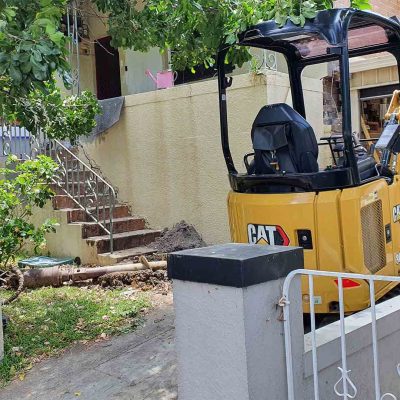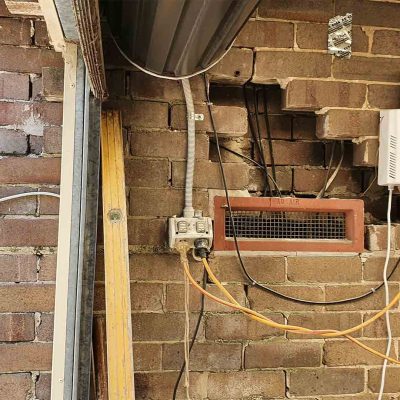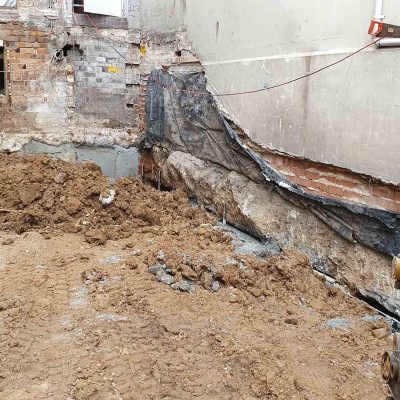Retaining walls are often used in home and business landscapes to make flat areas on sloped terrain. They prevent soil erosion, create level terraces, and enhance the aesthetics and functionality of outdoor spaces. Constructed from various materials like concrete blocks, natural stone, or timber, retaining walls can range from small garden borders to massive structures in commercial landscaping. While their primary function is structural support, ensuring proper drainage during retaining wall construction is crucial for their longevity and effectiveness. Here, we will delve into why drainage is critical for retaining walls and how it impacts their performance and durability.
The Importance of Proper Drainage
Proper drainage is crucial for the stability and longevity of retaining walls. It prevents water buildup that can cause structural damage and soil erosion. Here are key reasons why effective drainage is essential:
- Preventing Hydrostatic Pressure
Retaining walls can experience significant hydrostatic pressure due to water buildup behind them. Without adequate drainage, water accumulates, exerting immense pressure on the wall structure. This pressure can lead to bulging, cracking, or even complete failure of the wall if not properly managed.
- Ensuring Structural Integrity
Retaining walls are often exposed to prolonged moisture from irrigation, rainfall, or natural groundwater seepage. Without adequate drainage, the soil behind the wall can become saturated, leading to soil expansion and increased weight against the structure. This saturation not only compromises the wall’s stability but also accelerates erosion and undermines its foundation. Proper drainage helps in maintaining the structural integrity of retaining walls. It prevents water from saturating the soil behind the wall, which can weaken the wall’s foundation over time. By allowing water to drain away, the soil remains stable and less prone to erosion, thereby supporting the wall’s stability.
- Preventing Soil Erosion
Effective drainage systems help in controlling soil erosion behind the retaining wall. When water accumulates, especially during heavy rainfall or snowmelt, it can wash away soil particles and undermine the wall’s foundation. This erosion compromises the wall’s ability to hold back soil, leading to potential collapse.
- Prevents Frost Damage
In colder climates, retaining walls are susceptible to frost damage if water becomes trapped and freezes behind the wall. When water freezes, it expands, exerting additional pressure on the wall and causing cracks or displacement of the materials. Effective drainage systems prevent water accumulation, reducing the risk of frost damage and extending the lifespan of the retaining wall.
Drainage Solutions for Retaining Walls
Effective drainage solutions are essential for keeping retaining walls stable and resilient. By managing water effectively, these solutions prevent damage and maintain structural integrity. Here are key methods to ensure proper drainage for retaining walls:
- Perforated Pipes (French Drains): One of the most common drainage solutions is the installation of perforated pipes, also known as French drains, behind the retaining wall. These pipes collect and redirect water away from the wall, relieving hydrostatic pressure and preventing water buildup.
- Gravel Backfill: Using gravel as a backfill material behind the retaining wall promotes drainage. Unlike soil, gravel allows water to pass through freely, reducing pressure on the wall and maintaining soil stability. This method is often combined with perforated pipes for enhanced drainage efficiency.
- Weep Holes: Weep holes are small openings or gaps left between retaining wall units or at the base of the wall. They allow water to escape from behind the wall, preventing water buildup and associated pressure. Weep holes are particularly useful in concrete block or segmental retaining walls.
Hiring Retaining Wall Contractors
When constructing a retaining wall, hiring experienced retaining wall contractors is essential. They understand the importance of proper drainage and can implement effective drainage solutions based on the site’s specific requirements. Professional contractors ensure that drainage systems are integrated seamlessly during construction, minimising future maintenance and structural issues.
Some Final Thoughts
Proper drainage is not just a consideration but a critical requirement when building retaining walls. It directly impacts the wall’s stability, longevity, and overall performance. By preventing hydrostatic pressure, maintaining structural integrity, and controlling soil erosion, effective drainage solutions ensure that retaining walls remain functional and aesthetically pleasing for years to come. Whether using perforated pipes, gravel backfill, or incorporating weep holes, investing in proper drainage during construction is fundamental to the success of any retaining wall project.
For those planning to install or replace a retaining wall, consulting with knowledgeable retaining wall contractors ensures that these vital drainage considerations are addressed from the outset. With the right expertise and drainage solutions in place, your retaining wall can withstand the test of time while enhancing the beauty and functionality of your landscape.



